Types of Audi Mechatronic Systems
Audi mechatronic refers to the sophisticated integration of mechanical, electronic, and computer systems in Audi vehicles. This cutting-edge technology significantly enhances the functionality, performance, and driving experience across various vehicle components. Below are the primary types of Audi mechatronic systems:
Transmission Control Systems
Unlike traditional manual transmissions, Audi's mechatronic transmission control systems automate gear shifting through an advanced integration of electronic sensors and mechanical components:
- Uses multiple sensors to monitor vehicle speed, throttle position, and driving behavior
- Analyzes collected data in real-time to determine optimal gear selection
- Employs precision actuators to engage/disengage clutch and shift gears
- Key benefits: Improved fuel efficiency, reduced emissions, and smoother driving experience
Magnetic Ride Control
This innovative suspension technology adapts to driving conditions instantaneously:
- Features specialized dampers filled with magnetorheological fluid containing iron particles
- Utilizes strategically positioned electromagnets to generate controlled magnetic fields
- Instantly adjusts suspension stiffness by altering fluid viscosity through magnetic manipulation
- Key benefits: Superior ride comfort on highways and maximum stability during spirited driving
Steering Control Systems
Audi's mechatronic steering systems deliver precise control with minimal driver effort:
- Implements electronic power assist that complements mechanical steering components
- Utilizes sensors to detect steering input and vehicle speed
- ECU processes steering data and determines appropriate assistance level
- Key benefits: Reduced steering effort, improved maneuverability, and enhanced stability at all speeds
Expert Insight: Modern Audi mechatronic systems are increasingly interconnected, with data being shared between different subsystems to optimize overall vehicle performance. This integration enables features like adaptive driving modes that simultaneously adjust transmission, suspension, and steering characteristics to match specific driving conditions or driver preferences.
Specifications and Maintenance of Audi Mechatronic
The Audi mechatronic system represents a pinnacle of automotive engineering, combining precision mechanical components with sophisticated electronic controls and software algorithms. Understanding its specifications and maintenance requirements is essential for optimal performance and longevity.
Key Specifications
| Component | Description | Function |
|---|---|---|
| Mechanical Systems | Precision-engineered gears, levers, valves, and actuators | Execute physical operations with high precision and reliability |
| Electronic Systems | Sensors, control units, and electronic actuators | Monitor conditions, process data, and control mechanical operations |
| Computer Systems | Advanced software and algorithms | Process input data and determine optimal control parameters |
| Communication Interfaces | CAN bus, diagnostic ports, and other protocols | Enable data exchange between vehicle systems and diagnostic equipment |
| Power Supply | Vehicle battery and electrical system | Provide consistent power to mechatronic components |
Essential Maintenance Practices
Regular Inspection Schedule
- Perform comprehensive inspections every 10,000 km or 6 months
- Check for fluid leaks, connection integrity, and visible wear
- Monitor diagnostic systems for early warning signs
- Pay special attention to transmission fluid quality and level
Software Management
- Regularly check for available software updates from Audi
- Apply updates promptly to address known issues and improve performance
- Maintain accurate records of all software versions and updates
- Only use authorized Audi software sources to prevent compatibility issues
Environmental Protection
- Shield mechatronic components from extreme temperatures
- Protect against moisture and water ingress
- Avoid prolonged exposure to dust and corrosive environments
- Use protective covers when applicable during adverse conditions
Warning: Improper maintenance or neglect of Audi mechatronic systems can lead to significant performance issues, reduced fuel efficiency, and potentially costly repairs. Always follow manufacturer-recommended maintenance intervals and procedures.
How to Choose Audi Mechatronic Systems
Selecting the appropriate Audi mechatronic system requires careful consideration of various factors to ensure optimal performance, compatibility, and longevity. Whether replacing a failed unit or upgrading your vehicle's capabilities, follow these comprehensive selection criteria:
Functionality Requirements
Assess your specific needs based on driving habits and expectations:
- For performance-oriented driving, prioritize systems with advanced control algorithms and faster response times
- For comfort-focused driving, select systems with smoother operation and refined behavior
- Consider specialized functions like launch control or adaptive shifting if they align with your driving style
Key consideration: Match functionality to your typical driving scenarios
Complexity Assessment
Choose a system with appropriate complexity for your needs:
- Advanced systems offer more features but may require specialized maintenance
- Simpler systems typically provide greater reliability and easier servicing
- Consider your technical comfort level and access to qualified service technicians
Key consideration: Balance feature richness with maintenance practicality
Interdisciplinary Integration
Ensure proper integration across mechanical, electronic, and software components:
- Verify compatibility with your vehicle's existing systems
- Check for required mechanical adapters or electronic interfaces
- Confirm software compatibility with your vehicle's ECU version
Key consideration: Complete system compatibility prevents cascading issues
Communication Capabilities
Evaluate how the mechatronic system communicates with other vehicle systems:
- Modern systems should support current CAN bus protocols
- Diagnostic capability should be compatible with available tools
- Consider future-proofing with systems supporting software updates
Key consideration: Robust communication ensures optimal integration
Professional Recommendation: When possible, select genuine Audi mechatronic components or authorized remanufactured units that meet OEM specifications. While aftermarket options may offer cost savings, they often lack the precise calibration and vehicle-specific programming that ensures optimal performance and longevity.
DIY Replacement of Audi Mechatronic
Replacing an Audi mechatronic unit is a complex technical procedure that requires specialized knowledge, tools, and diagnostic equipment. While professional installation is strongly recommended, the following comprehensive guide outlines the process for qualified individuals with advanced automotive experience:
Important Safety Warning: This procedure should only be attempted by individuals with extensive automotive experience, proper tools, and comprehensive understanding of vehicle electronics. Improper installation can cause severe damage to your transmission, void warranties, and potentially create unsafe driving conditions. When in doubt, consult a certified Audi technician.
Preparation Phase
- VAG-COM diagnostic interface or equivalent
- Transmission fluid vacuum extractor
- Torque wrench with transmission-specific torque specifications
- Vehicle lift or secure jack stands
- Transmission fluid and filter replacement kit
- Park on level ground and allow the transmission to cool completely
- Disconnect the negative battery terminal to prevent electrical issues
- Raise and secure the vehicle according to manufacturer specifications
Transmission Removal
Mechatronic Unit Replacement
Reinstallation and Calibration
- Basic settings calibration
- Adaptation procedures
- Error code clearing
Professional Insight: Many Audi mechatronic units require specific coding and adaptation to your vehicle's VIN and existing systems. Without proper diagnostic equipment and software, a physically installed unit may not function correctly. For most owners, the expertise, specialized tools, and diagnostic capabilities available at Audi dealerships or specialized independent shops make professional installation the most reliable option.
Frequently Asked Questions
Audi mechatronic refers to an advanced interdisciplinary field that seamlessly integrates mechanical engineering, electronics, and computer science within Audi vehicles. This technology creates intelligent systems that combine physical components with electronic controls and software algorithms to deliver enhanced performance, efficiency, and driving experience.
The mechatronic systems in Audi vehicles handle critical functions including transmission control, suspension management, steering assistance, and various driver assistance features. These systems continuously monitor vehicle conditions and driver inputs to make real-time adjustments that optimize operation across varying driving scenarios.
Audi mechatronic systems serve as the central intelligence for critical vehicle functions. These sophisticated components:
- Control automatic transmission shifting patterns and clutch engagement
- Manage adaptive suspension systems to balance comfort and handling
- Provide variable steering assistance based on speed and driving conditions
- Integrate with engine management systems for optimized performance
- Process input from multiple sensors to create seamless driving dynamics
- Enable advanced features like launch control and sport driving modes
In professional terms, the mechatronic unit serves as both the brain and nervous system of these complex vehicle systems, processing input signals and coordinating precise mechanical actions.
Mechatronics is absolutely fundamental to Audi's engineering philosophy and brand identity. This technology represents the cornerstone of Audi's "Vorsprung durch Technik" (Advancement through Technology) motto in several critical ways:
- Enables Audi's renowned Quattro all-wheel-drive system performance
- Powers the responsive and efficient S-tronic and Tiptronic transmissions
- Delivers the adaptive driving dynamics that distinguish Audi from competitors
- Facilitates the progressive driver assistance systems in modern Audi models
- Contributes to improved fuel efficiency without compromising performance
Mechatronic innovation is central to Audi's competitive advantage in the premium automotive segment, allowing the brand to deliver sophisticated driving experiences that blend performance, efficiency, and technological refinement.
Audi mechatronic systems are characterized by several distinctive features that set them apart in automotive engineering:
| Feature | Description | Benefit |
|---|---|---|
| Adaptive Intelligence | Self-learning algorithms that adjust to driving style | Personalized driving experience that improves over time |
| Integrated System Architecture | Seamless communication between multiple vehicle systems | Coordinated vehicle dynamics and responsive performance |
| Precision Engineering | High-tolerance components with minimal mechanical play | Responsive, precise control and extended service life |
| Advanced Diagnostics | Comprehensive self-monitoring and fault detection | Early identification of potential issues before failure |
| Multiple Operating Modes | Configurable performance profiles (Comfort, Auto, Dynamic) | Adaptability to different driving scenarios and preferences |
These sophisticated features work in concert to deliver the refined driving dynamics, reliability, and technological edge that Audi vehicles are known for in the premium automotive segment.








































































































































































































































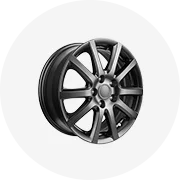
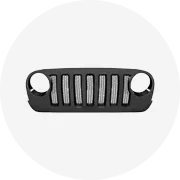

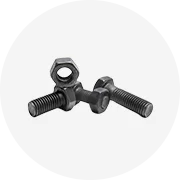


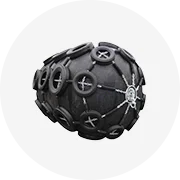
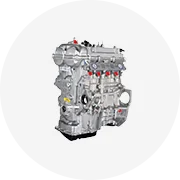
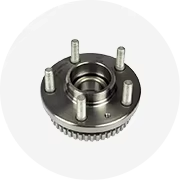
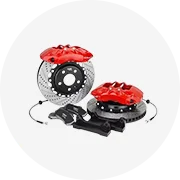
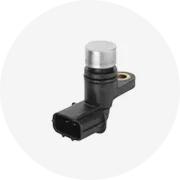


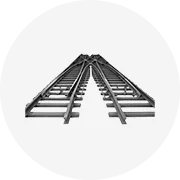
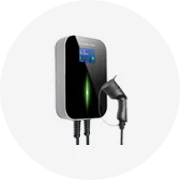
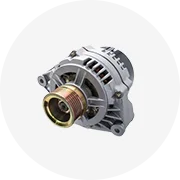






 浙公网安备 33010002000092号
浙公网安备 33010002000092号 浙B2-20120091-4
浙B2-20120091-4